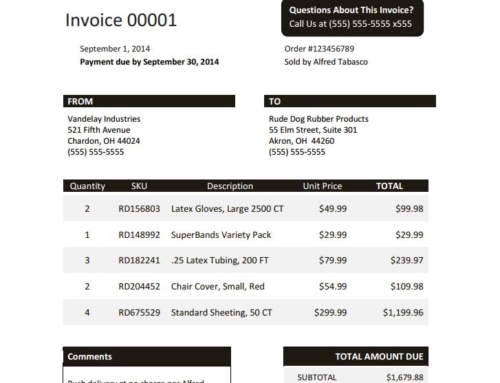Collecting on accounts receivable is one of the most important tasks that a business can put effort into. It doesn’t matter how well your marketing efforts are going or how many sales you make if you don’t collect on any of your open invoices. Accounts receivable is what gives your business cash flow and continues it running.
So, how do you effectively collect on accounts receivable? What are the best tactics to tackling accounts? Below we look at a few ways you can get started on collecting accounts receivable.
CREATE AN INTERNAL PROCESS FOR COLLECTING ACCOUNTS RECEIVABLE
One of the main reasons that a customer doesn’t pay on time is because there was an issue. Whether this is because the product was damaged, there was no purchase order made available, the incorrect quantity was delivered or any other issue, these can be avoided. By working proactively and putting in a process to ensure that these types of issues do not occur again can eliminate almost half of you’re collection issues.
TECHNIQUES FOR COLLECTING ACCOUNTS RECEIVABLE
- Send a past due email to your customers as soon as their payment is late
- Make a follow-up phone call to customers as soon as you send out an invoice to ensure they received it
- Work through your past due list by putting customers into buckets based on how late they are (0-30, 31-60, 61-90, 91-120, or 120+)
- Keep track of customer’s trade credit reports and get alerted when their score begins to decline
- Leverage your sales staff to help collect on accounts receivable by contacting their contacts and holding future sales until invoices have been paid
- Consider using an automated accounts receivable software to eliminate manual tasks
COLLECTIONS STAFFING
Unfortunately, there is no magic number for staffing your team that will guarantee your success collecting on accounts receivable. Every company is different and has different needs when it comes to creating a well-rounded team. However, you can make small changes to the way your team works which will improve their efficiency.
- Schedule your collections staff to work around peak hours for your customers to be available. For B2B companies, this means no scheduling on weekends or outside of the normal “9-5” hours.
- Keep a database of all of your customers and their information, including last paid invoice, open balance, broken promises, etc.
- Make sure all collectors are immediately posting when a payment is received by a customer. This reduces wasted time from a collector re-contacting those who have already paid.
There are many different ways to improve your collections process and increase your success in collecting accounts receivable. These tips will simply help you get started on how to collect accounts receivable. Once you have mastered these first steps, check out the rest of our whitepapers to dive deeper into collection techniques.




